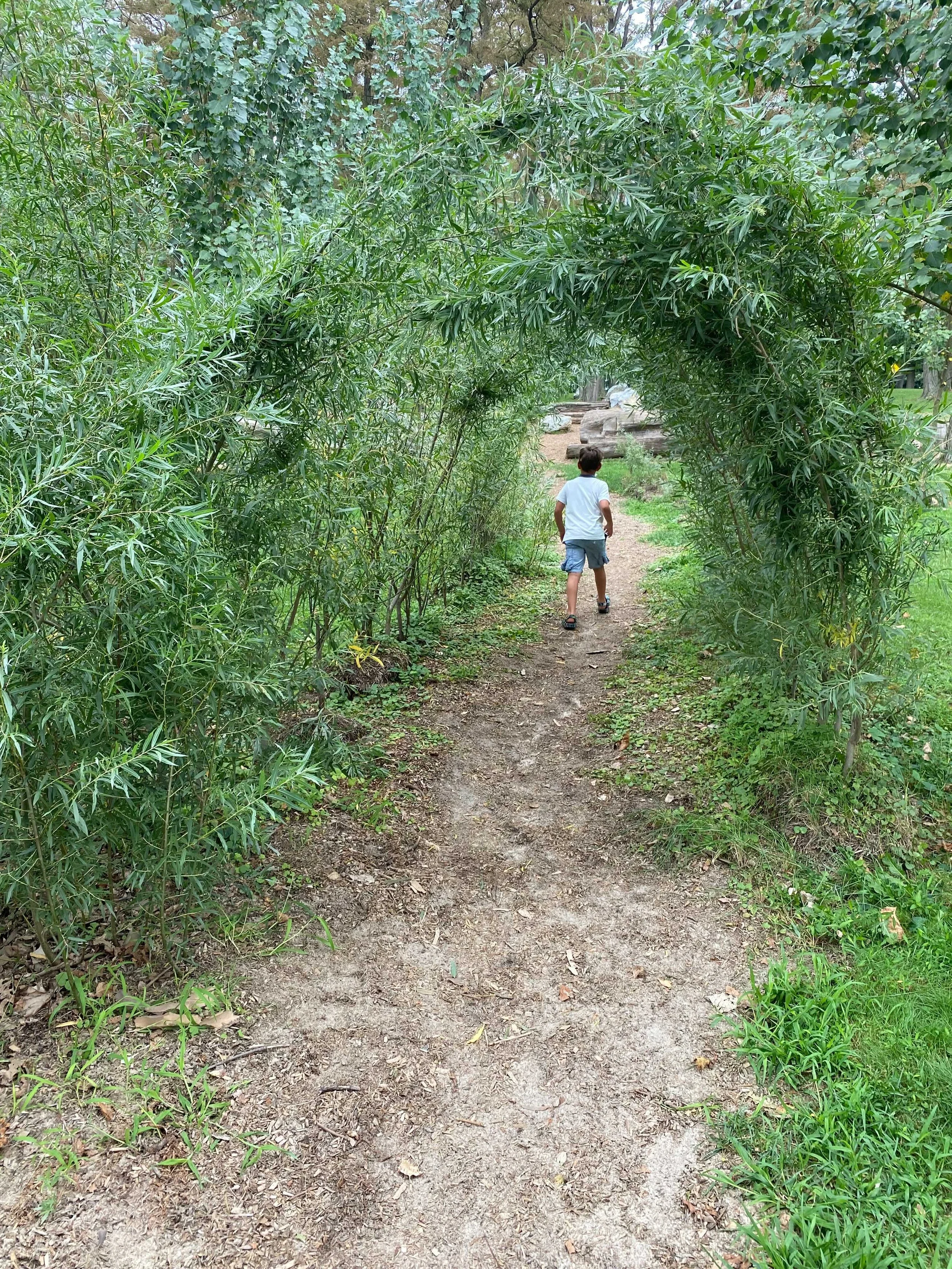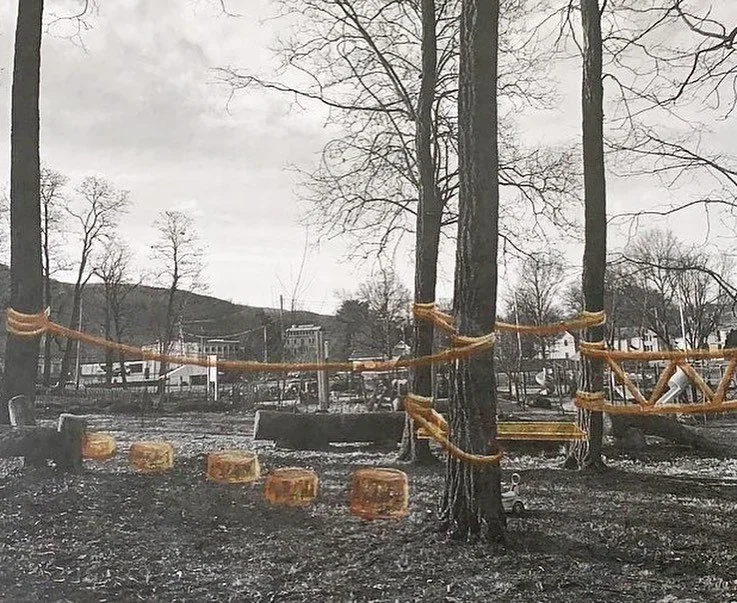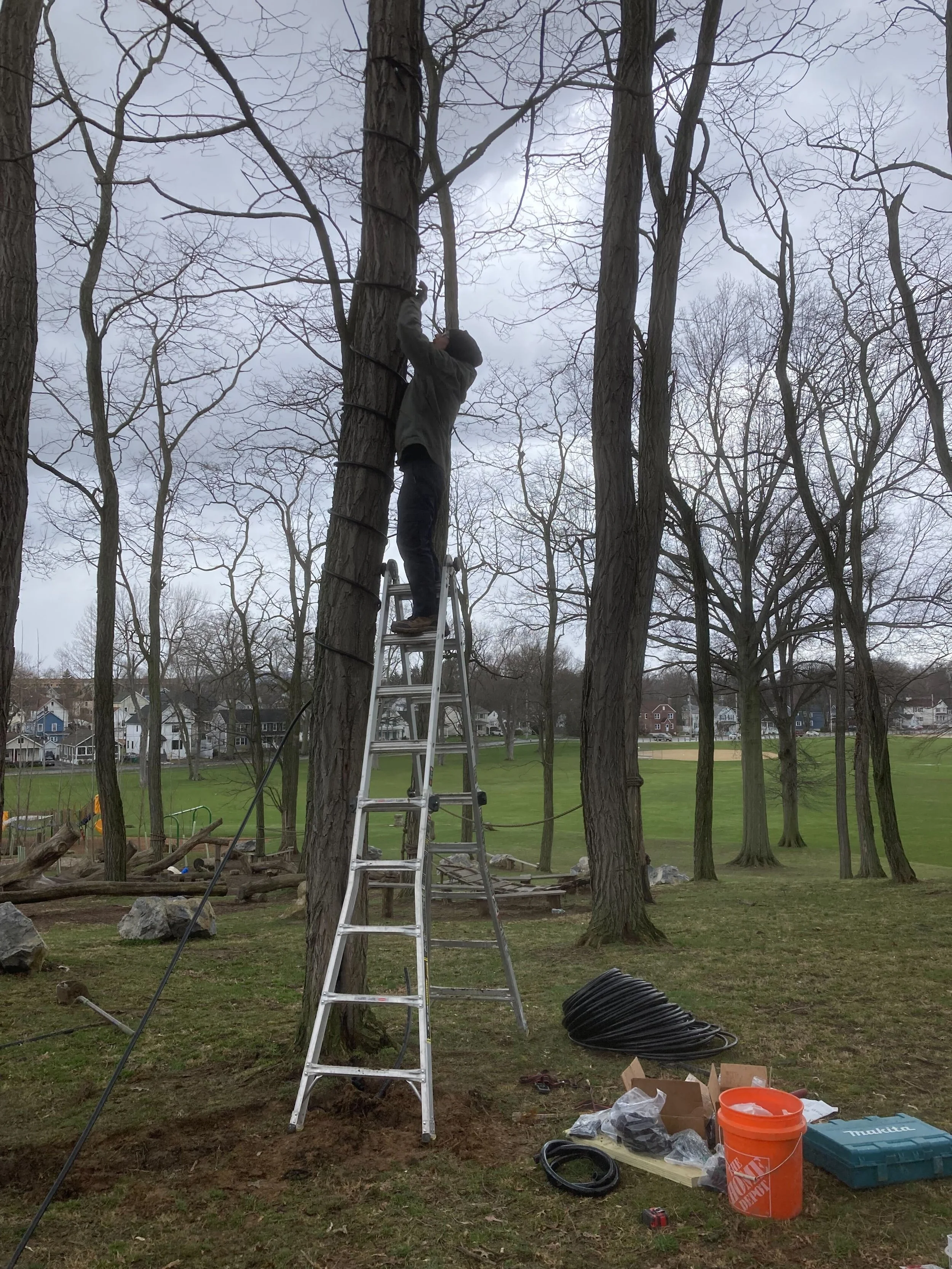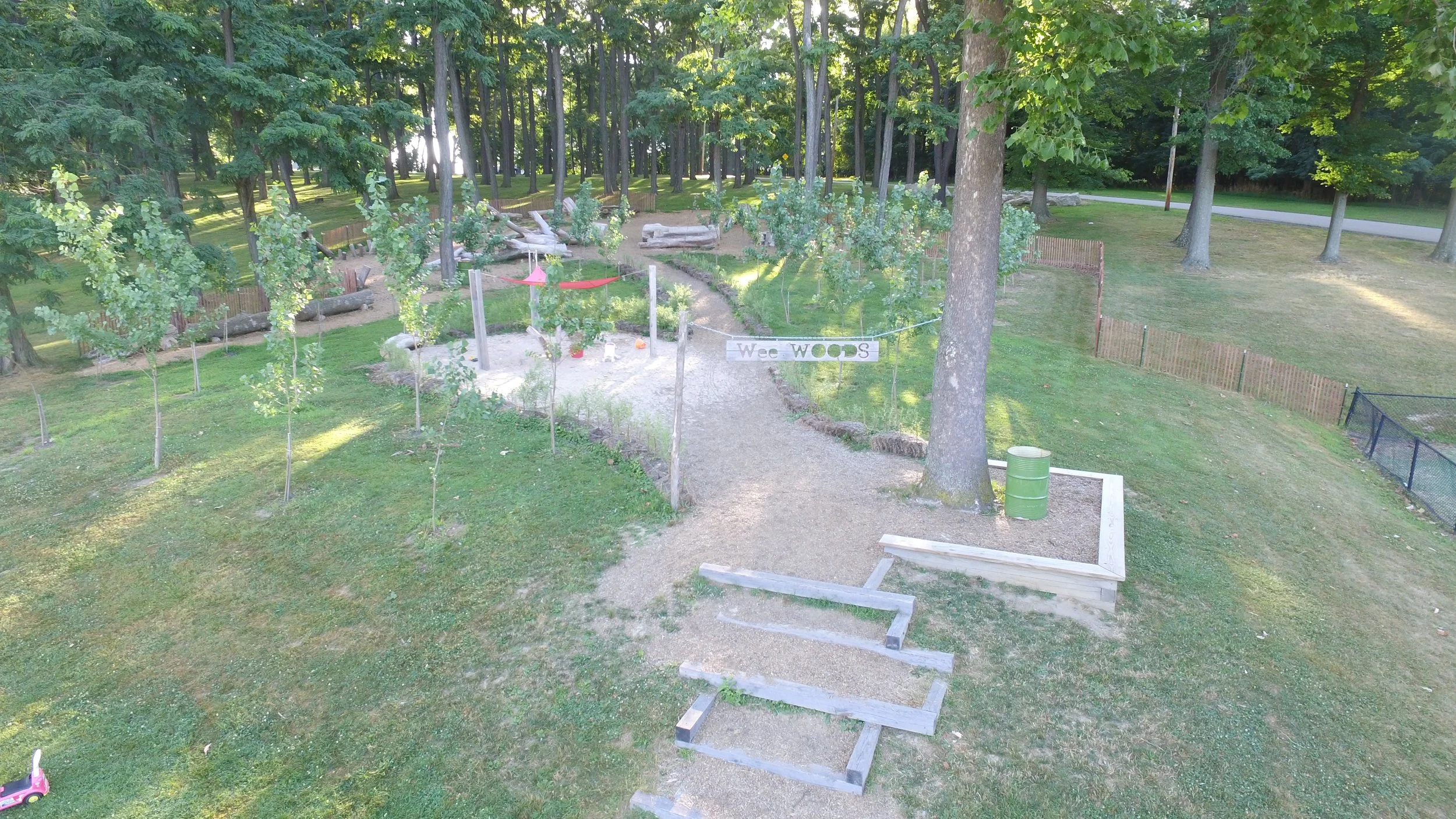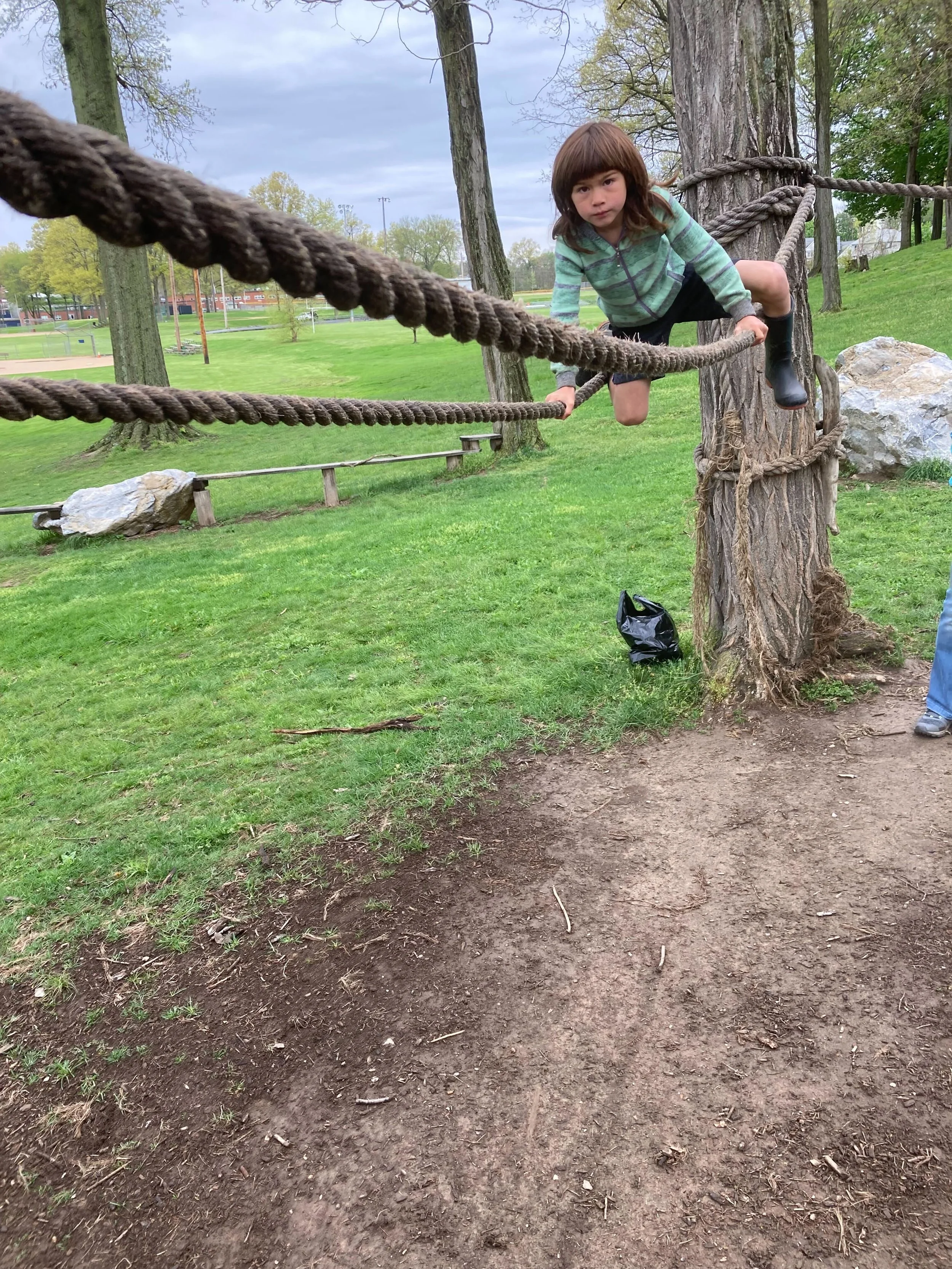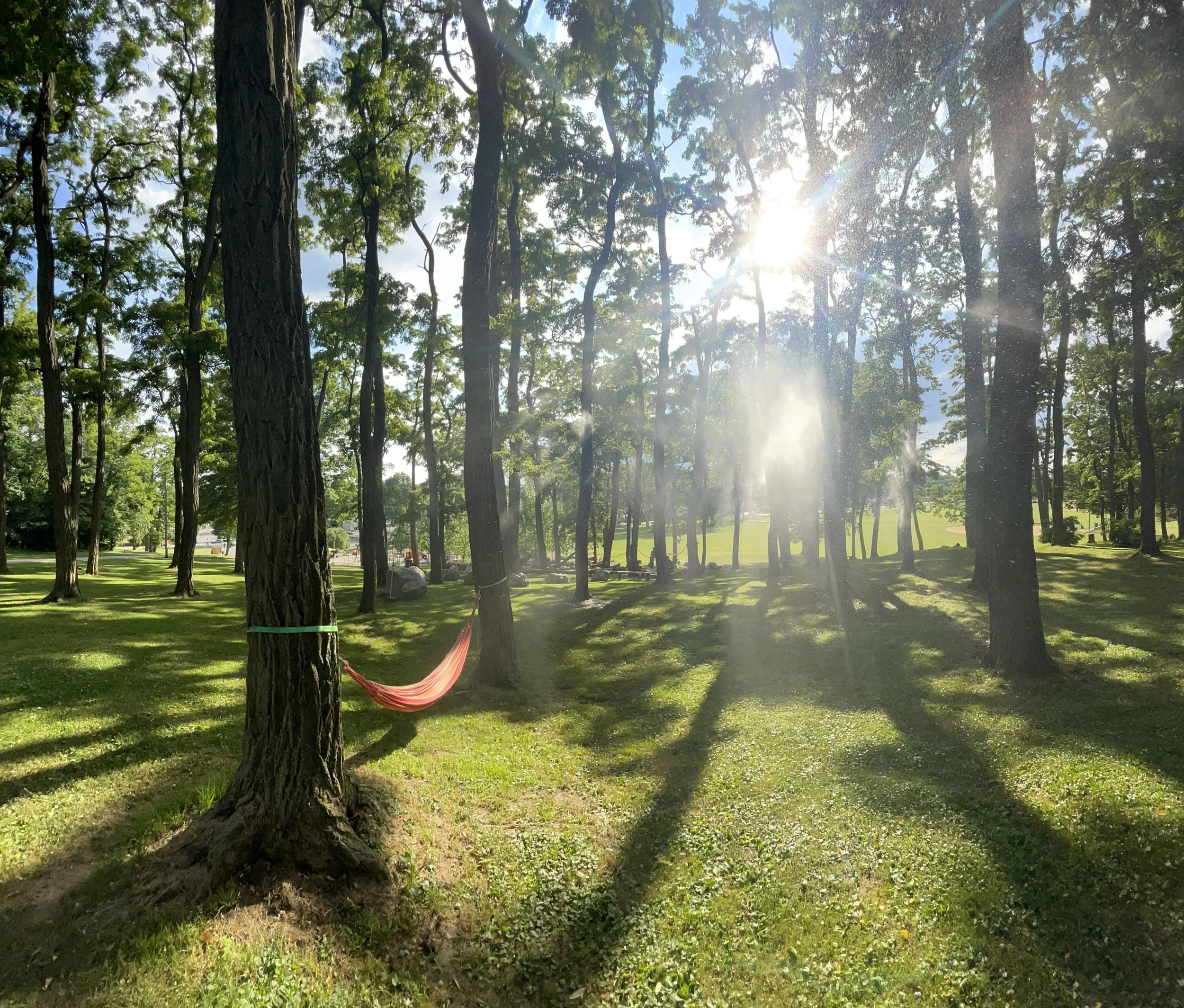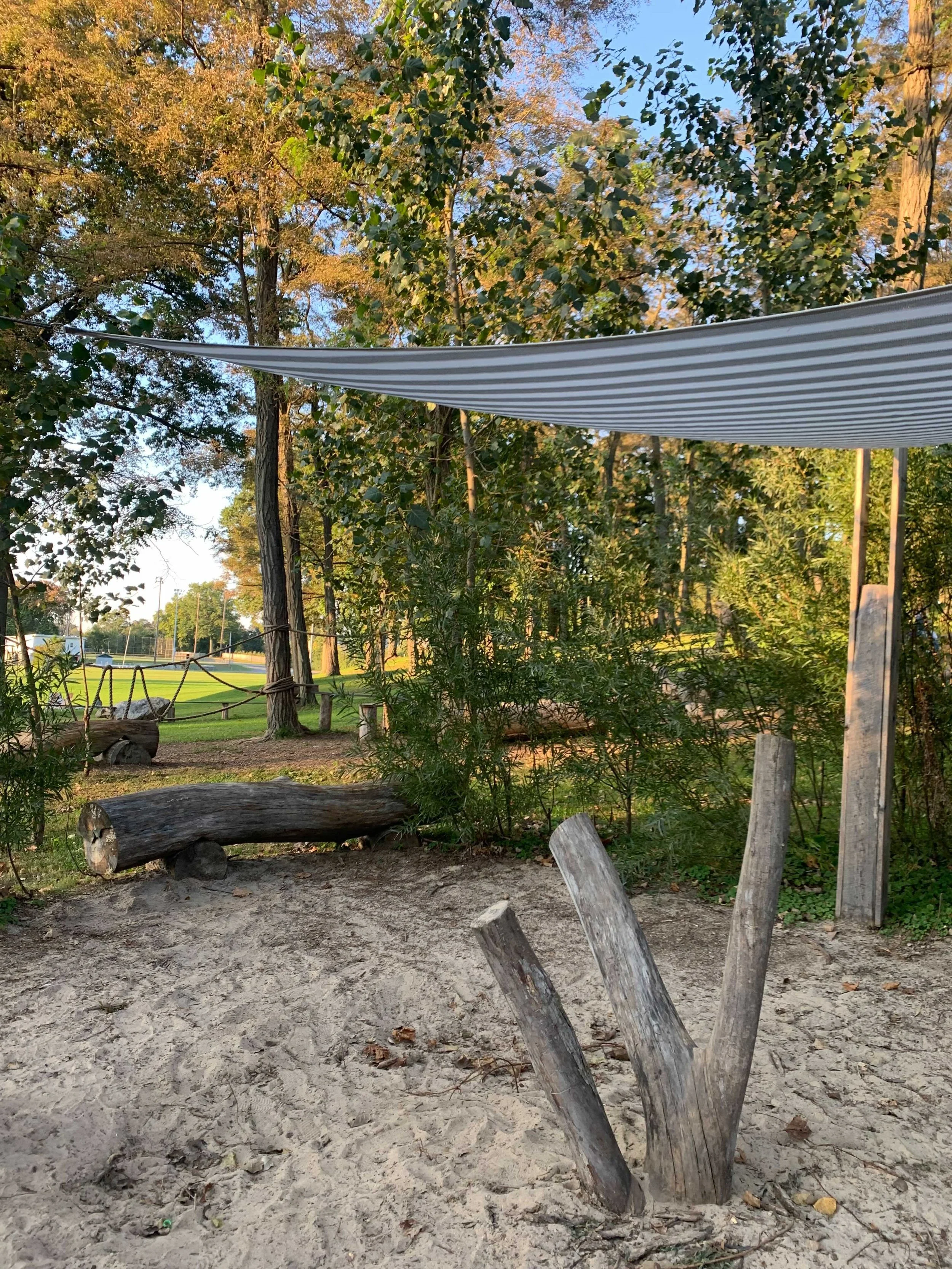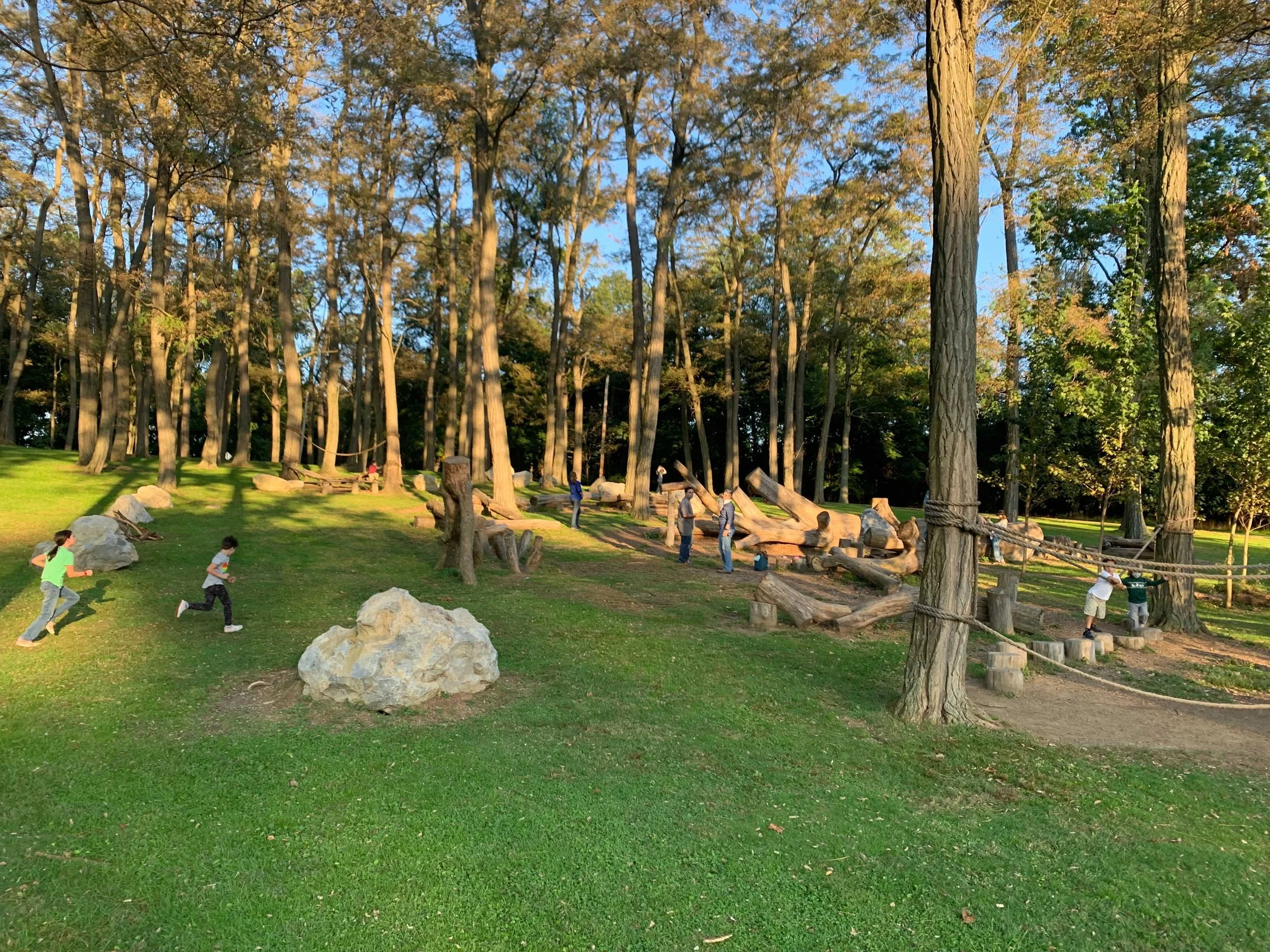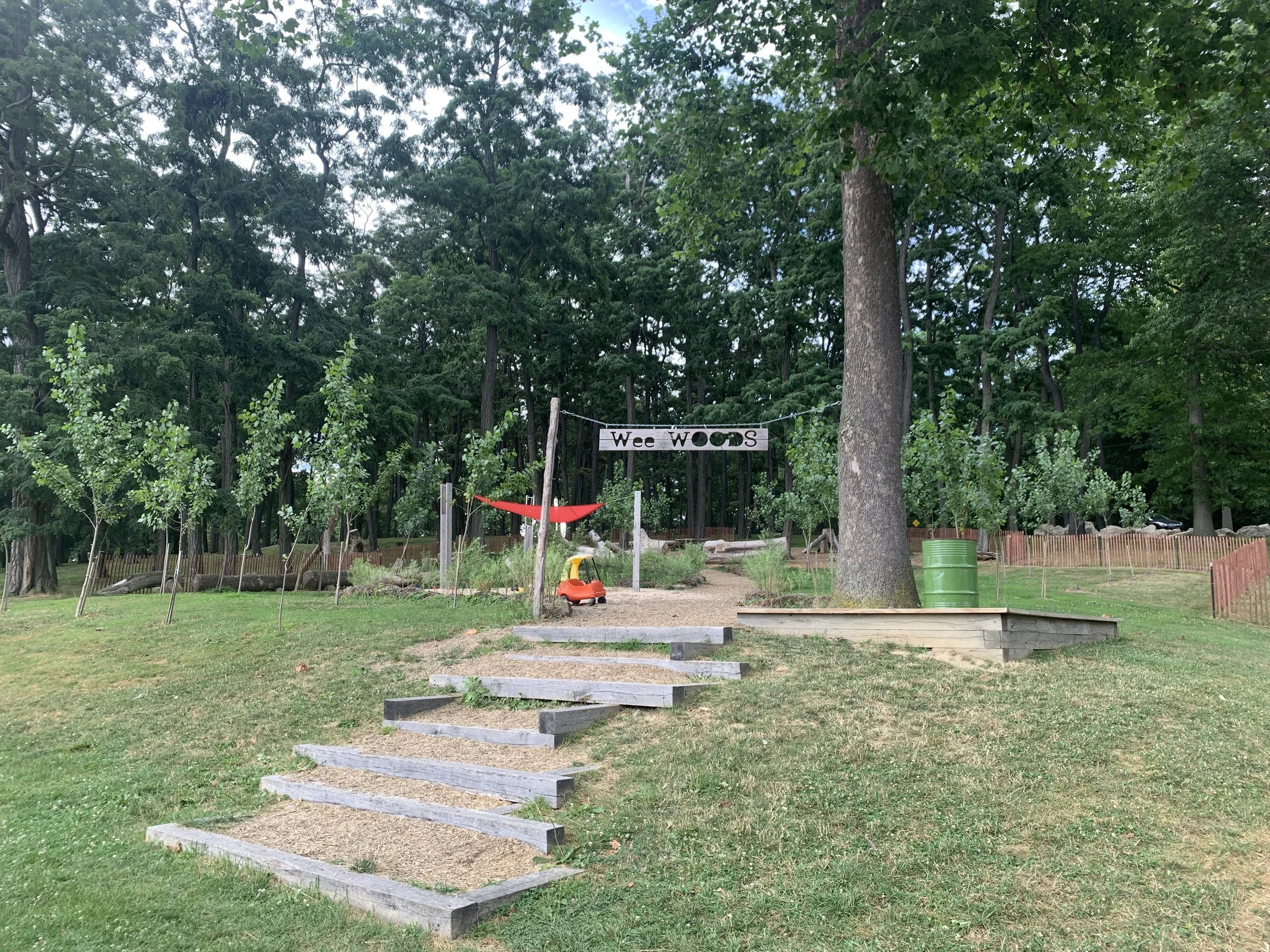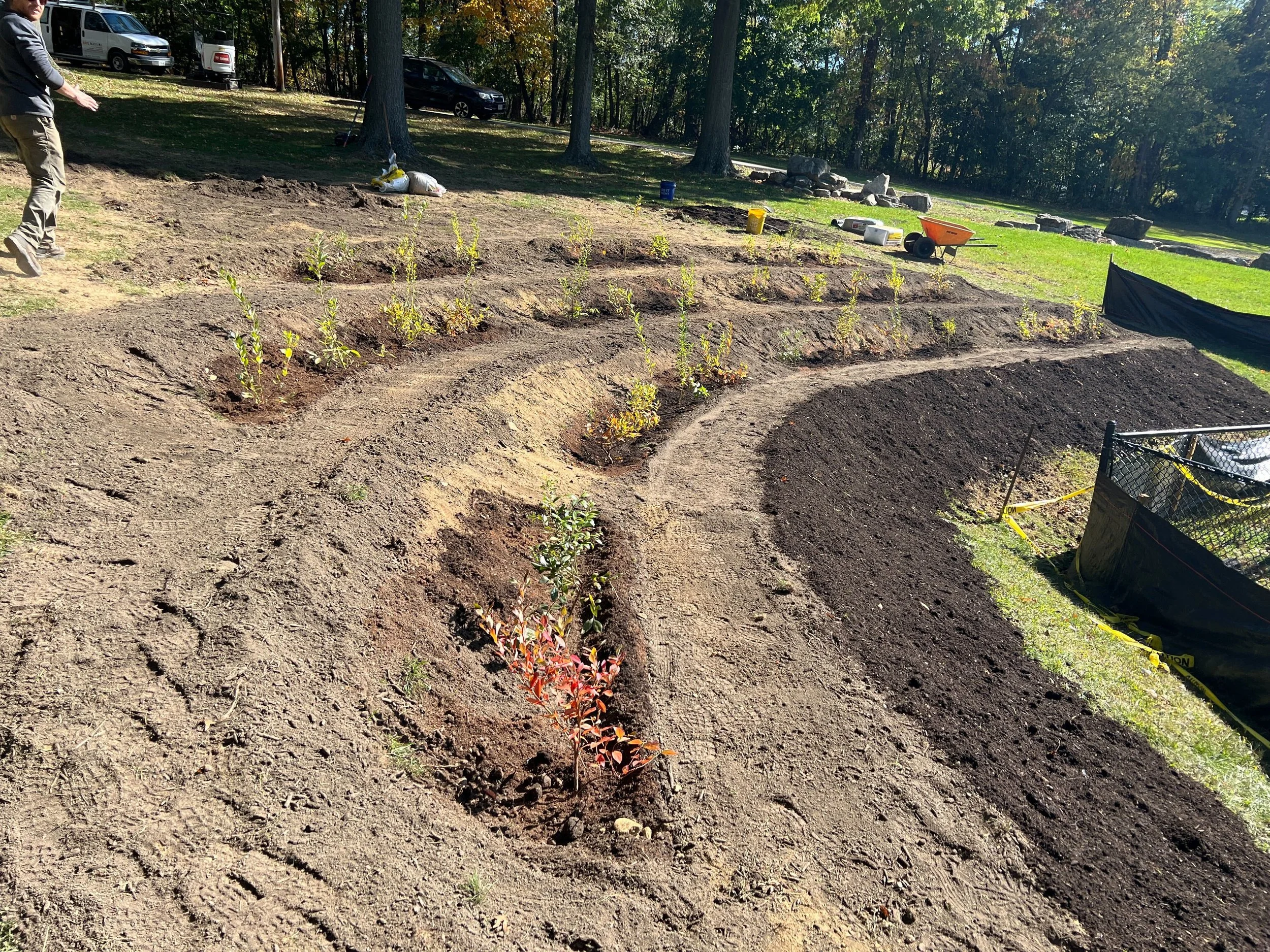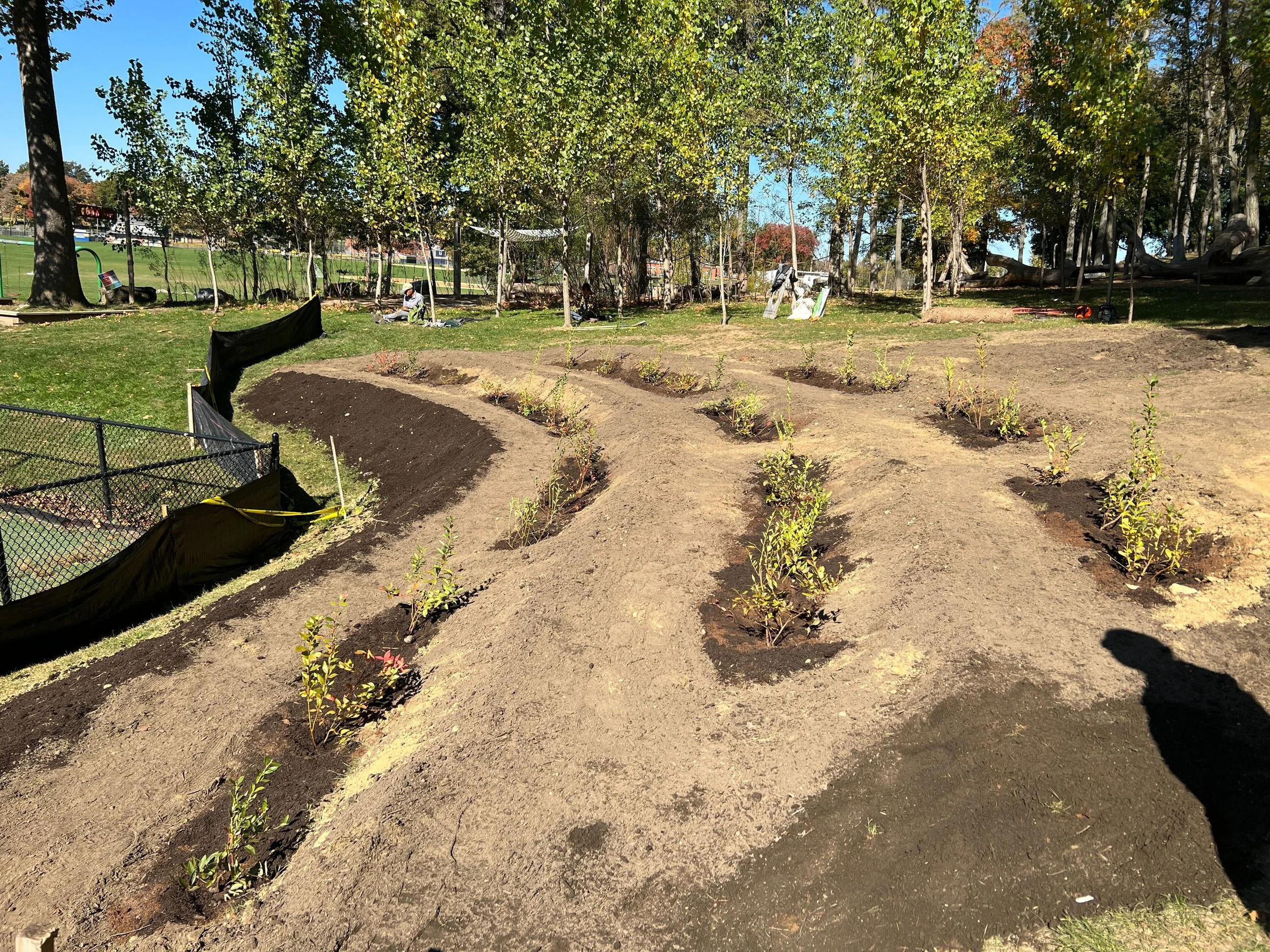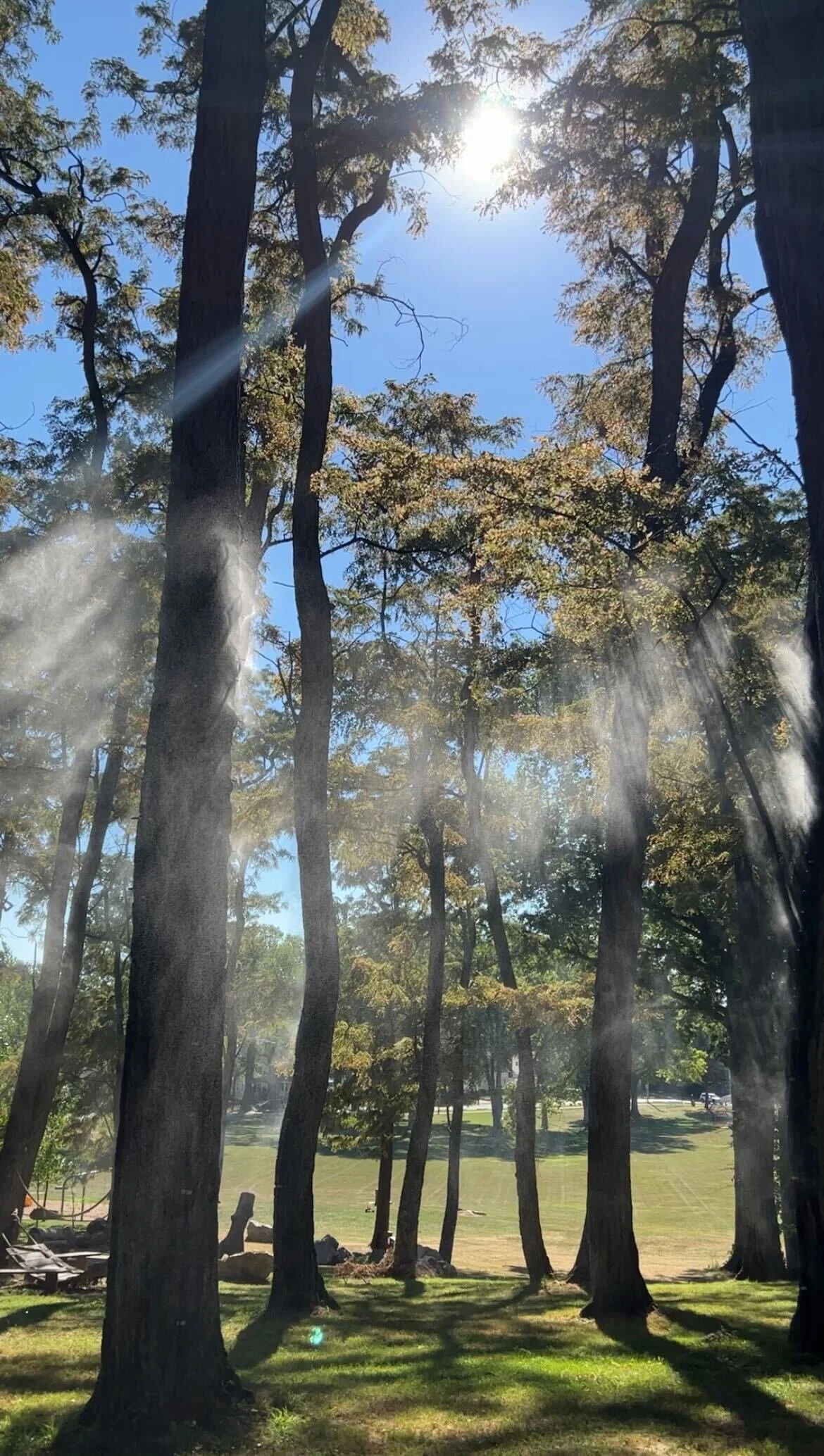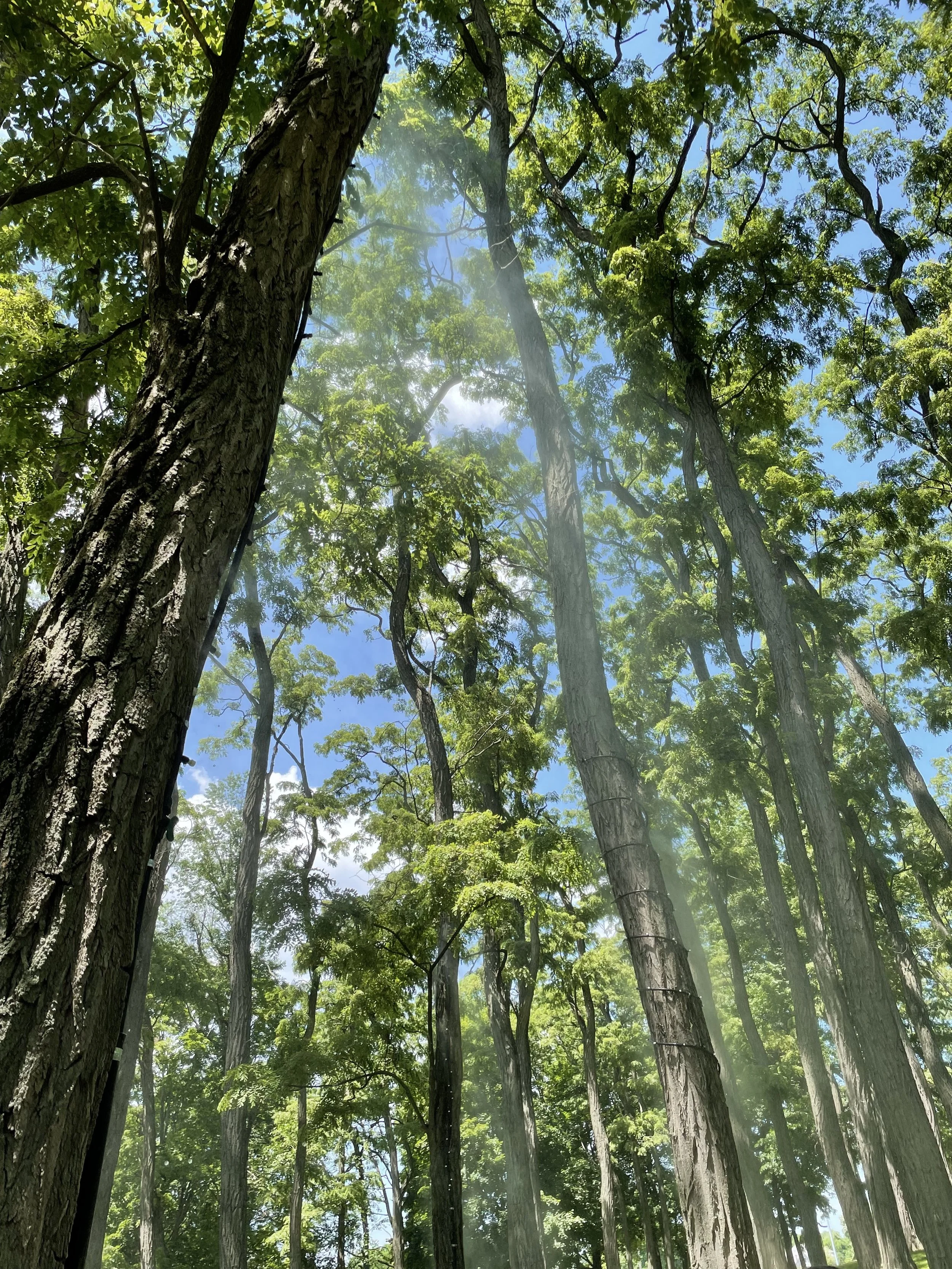Forest Playground at Memorial Park
Beacon, NY, is a charming small city with a vibrant and energized community. This spirit of collaboration has led to incredible volunteer-driven public projects, many funded through individual donations. One such project, which we were honored to work on, is the Wee Woods, an extension of the Memorial Park Tot Lot. This expansive, partially wooded space offers panoramic views of Fishkill Ridge in the Hudson Highlands and features open fields, ballparks, and a wooded slope populated by Black Locust trees.
Twenty years ago, Memorial Park lacked a playground for children. A group of dedicated local mothers lobbied the city to create a toddler-friendly play area, but with no city budget allocated, they took matters into their own hands. They founded the Wee Play Project and began raising funds by organizing an annual tag sale of children’s clothes, toys, and gear. This event became a beloved community tradition, offering affordable items to families while raising the funds needed to build the Tot Lot. Thanks to these efforts, the original playground was constructed, marking the beginning of an inspiring community-led initiative.
Over the years, the Wee Play Project continued to enhance the Tot Lot with new equipment in collaboration with the City of Beacon, which provided maintenance and repairs. Eventually, the board decided to pursue a more significant expansion of the playground area. This effort began with a community survey to gather feedback from local families. The results revealed a desire for fewer plastic structures, more natural play features, opportunities for climbing, and a deeper connection to nature. Inspired by examples of nature-based playgrounds in the Hudson Valley, the community recognized the potential to create a similar space in Beacon.
The Wee Play Project partnered with One Nature to design a nature-based playground that would expand beyond the existing Tot Lot and into the nearby Locust grove, creating what is now known as Wee Woods. The grove’s Black Locust trees, nearing the end of their lifecycle, create a shaded play area but represent a monoculture. One goal of the Wee Woods design is to introduce biodiversity through planting and re-naturalizing the hillside, adding ecological benefits alongside the sociological benefits of a nature playground.
Construction of Phase I of the Wee Woods project began in 2018. To fund the project, the Wee Play Project launched a “Sponsor a Tree” fundraiser, inviting residents to sponsor one of 50 hybrid Poplar saplings for $100 each. These fast-growing trees, a hybrid of native Cottonwood, were selected for their rapid growth (5-8 feet annually) and lack of allergenic seeds. The Poplar grove was designed as a natural maze with clear sightlines and pathways, encouraging imaginative play. The grove now provides shade and will eventually replace the aging Black Locust canopy, with many saplings already reaching over 30 feet tall.
Another key feature of Phase I was the construction of a grand entrance staircase leading into the Wee Woods. This inviting threshold includes a natural wood sign, wide oak steps with an organic design, and a circular tree bench that encourages visitors to pause and appreciate the surrounding environment. Adjacent to the staircase, a natural sandbox was created, nestled into the hillside and bordered by straw bales planted with Willow tree stakes. Over time, these stakes established roots and grew into a lush Willow hedge, providing shade and privacy.
The lower Wee Woods connects to the upper area via a Willow tunnel, a magical living structure created by planting Willow stakes along a pathway. As the Willows grow, their flexible branches are shaped into a tunnel, providing a whimsical passageway to the upper playground.
The upper Wee Woods features play structures crafted from the wood of a mature Elm tree that had succumbed to Dutch Elm disease. Collaborating with the City of Beacon Parks and Recreation department, the tree was repurposed into a central play structure. The Elm’s durable wood was sculpted into climbing features, balance beams, and forts, with smaller limb slices used as stepping stones and elevated pathways. Additional materials from other city properties were used to create a variety of natural play elements, fostering exploration and imaginative play.
The Wee Woods project exemplifies how community-driven efforts can transform a simple idea into a cherished space that connects children and families to nature while enhancing the local ecosystem. We are proud to have been part of this inspiring initiative and look forward to seeing the Wee Woods continue to grow and thrive.

